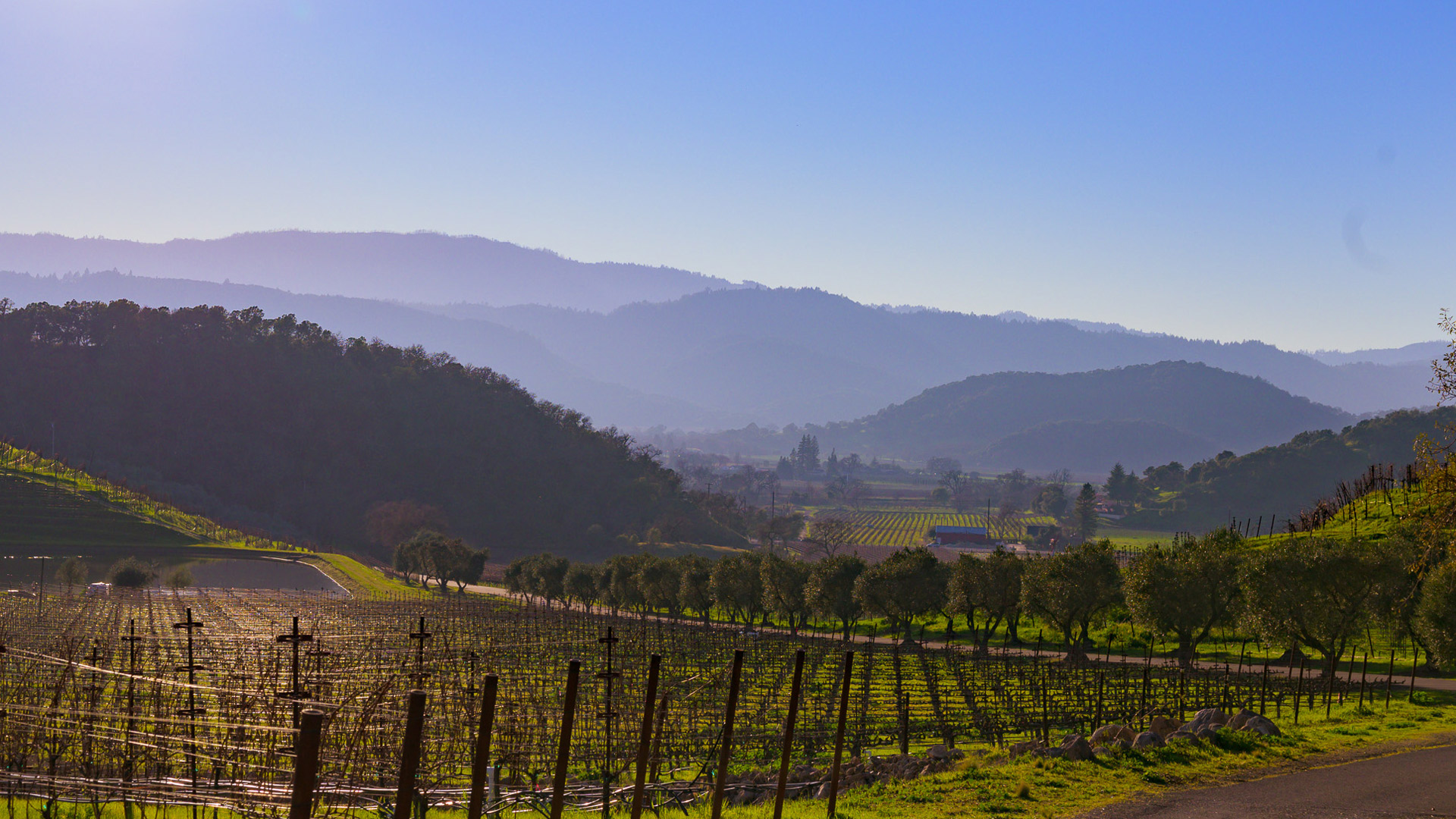Diamond Mountain District
Diamond Mountain wines to know
Single-vineyard and single-varietal Cabernet Sauvignon has become the idealized model for Diamond Mountain wines. You'll find a range of Cabernet Sauvignon from grippy and rustic to smoky-smooth depending on the producer, but the thing they all share in common is intensity.
Another wine that's incredible on these peaks is Syrah. Producers here get their inspiration from Côte Rôtie and produce a meaty, savory and bacon-fat style Syrah.
The views from Constant Wines on Diamond Mountain
A few wineries and vineyards to note in Diamond Mountain District
Diamond Creek – When Al Brounstein bought vineyard land in 1967, he refused his creditor's suggestions to plant Zinfandel and Chardonnay. Instead, he planted Cabernet Sauvignon. Since the first vintage in 1972, the wines have always been bottled by parcel because of the unique soils. Through their rustic intensity, these wines have become a hallmark for single-vineyard "Grand Cru" Cabernet Sauvignon in Napa Valley.
Von Strasser Winery – The winery that petitioned to have Diamond Mountain recognized as a unique wine-growing area. They produce a more lush style of Cabernet from Agira and Diamond Terrace vineyards.
J. Davies – The most southern vineyard on Diamond Mountain (with cool bay breezes) was first planted in 1862 and replanted with Bordeaux varieties in 1994. McEachran Vineyard goes into J. Davies Estate Cabernet which goes back to the 2001 vintage.
Diamond Mountain District terroir
Elevations start at 400 feet and there are vineyards as high as 2,300 ft (700 m) on Diamond Mountain. At 2,300 feet, the sun's ultraviolet rays penetrate at a rate that's 7% stronger than at sea level. This causes the vines to generate more polyphenols in the grapes giving wines deeper color and bolder, age-worthy tannin.
Temperatures on Diamond Mountain are similar to Calistoga where it heats up to over 100 °F during the day but cools off by nearly 40–50 degrees Fahrenheit at night. For grapes, the cooler temperatures help preserve acidity in the final wine.
Soils on Diamond Mountain are varied with volcanic rock, powdery volcanic ash, gravelly clay, and sandy quartz. This is why we see so many special individual vineyards because each soil type results in different flavors and textures in the wines. Here are a few things to look for when tasting Diamond mountain wines.
Volcanic soils contribute to almost dusty and wet-rock like aromas in the wines.
Gravelly clay makes for very structured, age-worthy Cabernet Sauvignon.
Sandy quartz delivers wines with more elegant textures and floral aromatics.
Volcanic ash generally makes for red wines with pure, rich fruit aromas.
Diamond Mountain District AVA Facts
- All of the Diamond Mountain District AVA is over 400 feet above sea-level
- The area is just 5000 acres with just around 500 vineyard acres planted.
- Diamond Mountain District AVA was established in June 2001.




















